For four years between 1976-1980, Joyce Baronio took pictures of strippers, porn stars, burlesque dancers, and sex show workers in the Times Square area of New York.
A selection of these photographs was published in 1980 in her award-winning book, “42nd Street Studio”, where striking black and white images of adult film stars like Sharon Mitchell, Joey Silvera, Beth Anna, Candida Royalle and Vanessa Del Rio rubbed shoulders with pictures of unknown and long forgotten performers.
The Rialto Report’s Ashley West spoke to Joyce about her work and her memories of working in Times Square.
Were you photographed by Joyce as part of the “42nd Street Studio” series? Please get in touch as we’d love to hear your memories of it.
We’re indebted to Joyce for allowing us to reproduce some of her photographs in this article. For more information on Joyce Baronio and her work, visit her website here.
Prints of these photographs are available from Joyce on request.
_______________________________________________________________________________________________
Joyce Baronio interview:
Where was the “42nd Street Studio” where these photographs were taken?
It was a small office above the Show World complex.
It was very narrow, maybe 12’ by 8’ and I made it into my studio. Nobody else really wanted it. It was too small. I liked the fact that it was so small because the white walls really reflected light, and filled in the shadow areas.
The owners of Show World allowed me to rent it because they thought maybe they would use some of this enormous amount of space for a photo school someday. I was teaching at the New School at the time and I started by renting the space to do pictures for myself in this little studio. I think that they thought, oh – she’s as a teacher, maybe at some time we’ll have a photo school in the space, and we could use her to help set it up.
They called me ‘Doc’ because I told them I had a doctorate in photography.
Can you remember the first photograph that you took in the “42nd St Studio”?
Yes, my first one was the photograph of Beth Anna.
At the time, I didn’t know whether I was even going to stay in the studio. I just was trying to find subject matter and I didn’t really like it there. It was a very hard place to be. In a way I was looking for an excuse to not be there, and when I got this particular picture, I thought – oh shit, now I’m committed. I’ve found my project. I can’t back out now. I knew I was going to have to stay. I couldn’t help it.
Where did the idea for the “42nd Street Studio” series of photographs come from?
I’d been photographing beauty contests before that. Then when I got out of graduate school, I hunted down a new beauty contest and I found out that the contestants worked in a variety of jobs around Times Square.
There was a promoter; his name was Rod Swenson. I got in touch with him. He’d gone to Yale. A peculiar guy. I didn’t get to know him very well, but he allowed me to photograph at the beauty contest. Then, from there, I learned from the contestants about the various places where strip shows took place. I realized that if I wanted to continue photographing these people, I was going to have to actually go to Times Square and photograph them. I couldn’t be on the street or hanging around, so I got a little studio.
Were the photographs taken over a period of several years?
Oh yes, four years.
What places did you visit to find your models?
At first, I had to go to the Melody Burlesque. Ugh, what a place.
There was also The Follies. That was terrible. Then there was the Roxy. It was the last remnants of the old school stripper days.
Then after two years of working on the project, Show World started live shows; who knows, maybe they noticed the girls who were coming through their doors to be photographed by me. So then I was able to photograph the Show World performers. They could come straight up to my studio in the elevator from the stage area downstairs.
What did you think of the live shows?
I’d been used to photographing these all-American fantasies, and I’d done very well with beauty contestants, behind the scenes of these all-American, kind of virginal pageants. I had done some good pictures. So I sort of thought this is a territory for me. It was like being an explorer, really, in that you feel that there is a territory there that nobody is in, and it is right for you. Make-believe and dressing up came from my childhood, and these were people were doing that.
At first the performers in Times Square were from a completely different generation, sort of left over from Blaze Starr and the old burlesque houses. It was all rather innocent to go on stage and take your clothes off. And they didn’t even take all their clothes off anyway. I thought it was incredible that they could even do that. I could never – it was amazing to me.
But then something happened. Suddenly there was a demand for sex shows. Live sex shows. B&D shows. It was way over my head. I had to really take deep breaths. That was not the same as burlesque; it sort of pushed itself under that heading, but it wasn’t. It was shocking, really. But it was also very, very liberating.
I came across a newspaper, ‘Pornocopia’, which was published in the mid 1970s by Ron Martin, the manager of live shows at Show World. It features some of photos that look suspiciously like yours credited to “J. J.” – though many of them don’t appear in your book. What’s the story there?
That was me. I had to find some way to be connected to the sex industry so that I could be accepted by the strippers and people who worked in the clubs, so I allowed the paper to use some of my pictures. I didn’t photograph specifically for them though; they used my own pictures. That helped me gain the trust of the people who were on stage, because at first they couldn’t really relate to what I was doing that well.
What was your pitch to your subjects? When you approached them, how would you explain what you wanted to do?
I would just tell them the truth, even though it seemed a little odd to them. I said, “I’m photographing people acting out fantasies in America”. Then when I had a couple of pictures in this little industry rag, ‘Pornocopia’, that was a little helpful as they could see the pictures for themselves.
Many people were interested, but they didn’t understand what kind of pictures I wanted. They were used to people wanting to take sexy pictures of them. So when I got a couple of pictures developed, I could show them. I’d say: “Look, I did this one and that one,” and they could see for themselves what I was doing.
I would explain to them the importance of light. I said, “We have to wait for a sunny day. It has to be sunny.” Nobody had ever spoken to them about photography like that before, about sun, about light.
What did you want to capture in your photographs?
I was just trying to have each model act out their fantasy. I was trying to have a sense of place. I tried to make the models look great.
How difficult was it to get the models to commit to doing a session with you?
They wouldn’t necessarily show up, so I had to go and get the model myself and make sure that she remembered that she would be photographed that afternoon. Sometimes I would go to where they were staying or living, and say, “Don’t forget. Today is the day.” They would say, “Really? What day is it?”
Were they in the studio for a few hours, or was it really quite quick because they didn’t have too much time?
Sometimes they came on a day off, or they came before they started for the day, but very often it was on their breaks.
How many pictures would you shoot in a session?
There were 21 pictures on a roll and I did two rolls. It was a Pentax, 6 by 7 centimeter, 2¼ by 2¾.
I had that discipline of going out like a hunter gatherer. I thought of myself that way, the hunter gatherer, going out with those rolls of film. Either you are going to get it in those two rolls or you are not. I don’t photograph on and on and on. I just try to get it, get the right light and the right feeling. Once in a while, it just didn’t happen.
Would you offer any instructions to the models?
No. It doesn’t work. If you do that, they look stiff. No, it was all timing.
I just asked them to stay in the sunlight in the studio. That was the hard part. They were so used to being directed, so I would say, “Just relax. You are on your break. Just stand in the light. That is all you have got to do, stand in the light. Don’t do anything. Feel the sun. Over this way a little more,” or, “Over that way a little more. Oh, that shadow is nice. Move that way a little more.” Then they would start to feel the light. I really wanted them to feel the light. Then they would start to kind of come alive. With something like this, I would just wait until I saw the person being herself, not smiling to go on. Then I would say, “Wait. It’s just fine, the way it is,” and sometimes they would try to kind of straighten up or smile, and I said, “You were fine, the way you were, just fine.”
Believe me, it is much easier to not have to use people. I love the shapes of the light coming in and out, and I sometimes wished I could just photograph that.
You clearly made your subjects feel relaxed.
They opened up. They would do more than I ever could imagine, they just volunteered more. I related to their fantasy enactment.
I never get the feeling that you’re trying to train your camera on them because you want to record some weirdness or freakishness about them, and you’re not judgmental at all.
I was very careful with that. First of all, I am a lover of Diane Arbus, I am, but I didn’t want to do that either. I am myself. I am more on the Walker Evans side but a combination too.
How would you compensate the subjects for the pictures you took of them?
I would give them a print of their photograph; I was usually able to this within a week of taking the photograph.
What was a typical day for you when you were doing these photographs?
I was living in Connecticut so if I knew it was going to be a sunny day, I would travel in from to Grand Central arriving around 11:00am. First I’d go to the Yale Club. It’s right there at 44th St. I’d do all my phone call things and then brace myself and walk over to 8th Avenue. It was a strange experience – going from one extreme to the other.
I’m a very disciplined 9:00am to 5:00pm person but the live shows started around 11:00am, and even when they opened – often nobody would show up in the audience for the first show, so there wasn’t much point in getting there earlier. I would find out who was on the schedule because it would change from day to day.
How safe did you feel working there?
The first day, I had two cameras with me, and one camera was stolen. Somebody grabbed it. I never really felt too comfortable on the streets there.
What was your appearance like when you went into the studio?
I wore a jacket and a tie, so that no one confused me with the other women.
Why was that important to you?
Without that uniform, I would have been just another woman, I wouldn’t have been a professional. I wouldn’t have been accepted. There were only workers and management in the Show World building, and I didn’t want to be a worker. I had to be management. I had no choice, so I looked managerial. I acted managerial.
Did you form any friendships with any of the people you photographed?
No, I never had much personal contact or personal relationships with the people. I photographed them, and that was that.
Once towards the end I became friends with a model. A girl saw my pictures in American Photographer and she came in to be photographed by me. Her name was Lisa Be. She was one of these people doing it because she wanted to learn to love her body more.
Was that important to you?
I don’t like to think of my territory as only women, but women were very much part of that revolution of that time in the ‘70s.
The lighting is so striking in your photographs; did you have any artificial lighting in the studio?
No, it was all natural light. It was difficult as I commuted from Connecticut for the first two years, so I had to try to combine a sunny day with the availability of the model, and so on. It all had to come together perfectly for me to be able to take the photographs.
There is a sort of a single cell, prison-like quality to the studio.
Yes, but at least the bars are light. I had light.
When I first got that studio, I wondered what I was going to do with that chicken wire in the window. They wouldn’t let me remove it, but I ended up falling in love with it.
It’s ironic because your father was a director of federal prisons.
Yes. He wanted me to photograph in the federal prisons, death row inmates.
The light is a symbol as well, isn’t it, because you are taking subjects that performed in the dark, and you’re showing them in a new light.
Yes. There was no point in photographing them down where they were dressing or performing for example. No point at all. Instead I fell in love with this room and the light coming in. It was like a light box.
How did you start taking photographs?
I was studying art history at Kenyon, and I was perfectly content to be an art historian and spend my time researching and writing papers, teaching. I thought that is what I was going to do, be a college teacher in art history. But my two art history teachers decided to get a divorce and suddenly I didn’t have a major. I just panicked, and then I thought I’ll move into the history faculty. But the college said, “No, your credits are considered art”. I didn’t like painting, so I suddenly had to start to take photographs.
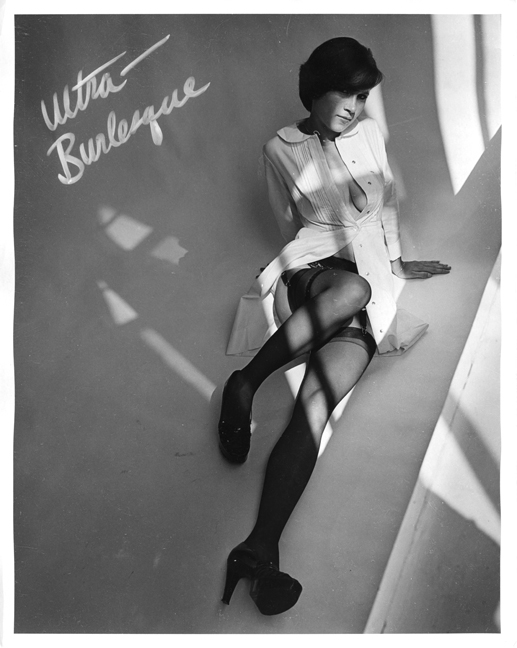 Photograph used by the Show World entrance for publicity
Photograph used by the Show World entrance for publicity
What was your formal training like?
The photography department at Yale was all guys, and a certain kind of guy too. I don’t mean to generalize, but it was super-Waspy, very establishment-oriented. They didn’t really want women there. They hadn’t had many women, and they were resentful. They did their best to ignore me as much as possible. It was a very male chauvinistic place at the time. They didn’t like it if they saw any originality or talent.
It was a very strange experience. Emotionally, it was very hard.
What was the effect of this on your training?
It made me very technical. I felt that had to be better than the men just to be equal.
You studied with the great photographer, Walker Evans. What was he like?
I had this wonderful, wonderful friend in Walker. I was a really shy person. The person behind the camera is always shy.
He was such a neat man. He had a lot of confidence, and he liked what I was. He took me on.
He died in 1975 but whilst he was alive, we were friends. We were buddies. We clicked.
What were the subjects of your first pictures?
I was always looking for people acting out fantasies but I couldn’t always find people, so I kind of prowled around little towns, hunting and gathering.
Your pictures are black and white, but there’s a mid-tone richness to them; how difficult was it to achieve that?
I became an expert in how to use the film so that I got all these mid-tones. Most of the time, if you photograph in light hues, you get a very contrasting picture and you lose the medium tones. That’s why people like light that’s overcast because you get gray tones.
It doesn’t have the richness, so you have to learn technically. I did. I learned the technique of over-exposing the film and then under-developing it, so you get all the lights. You photograph for the darks. You expose for the darks and develop for the light, but you expose like crazy, put a lot of light on that film, and then don’t develop it very long so you have the lights gone in to show the detail in the dark areas. You get the full scale of the film system.
I also liked to use the smallest aperture to get the depth of field, and would always use a tripod with a ball head, which gave me a lot of flexibility given the weight of the camera.
Is the choice of film important as well, the actual stock?
Yes. I always use TRI-X. It is probably gone. It’s very expensive. TRI-X Pan.
Weren’t your photos used for the posters for the live shows at Show World too for a time?
Yes, I do love posters. I’m so aware of the whole French tradition of posters, and always wanted to be part of that tradition. I kept a number of those posters from Show World.
I liked my pictures being on the posters. They’re on flimsy paper and they’re disposable but I like that.
The photos were also on the flyers. There would be somebody that they would call the fly boy. The fly boy would give out these little hand-outs, and sometimes it would have one of my photos – a head shot kind of picture.
Who decided what costumes the models would wear?
The costumes were theirs, mostly from their stripping routines. Their costumes were very important to me because they were kind of my link with this other world, these little costumes.
Their clothes were just wonderful. This whole look that these people had at that time, these early erotic performers, was very cutting-edge. They were all going to the clubs at night.
That’s when it changed. Suddenly those people who had been in burlesque thinned out, and this other generation emerged of hip young people who wanted to be experimental and break ground, social ground, by casting off the restrictions of society from the previous generation, and their outfits showed that.
They were very interesting people. I was amazed because it suddenly happened. Suddenly, there was this very hip group acting out these sex fantasies on 42nd Street, and making cash doing it. Many of them had boyfriends that were in bands. One girl was with somebody in the Ramones for example, and they all hung out at night until all hours. They would come in and do a couple of live shows, go out to the clubs, and often wear the same outfit.
Having said that, there is still a vulnerability to them that you bring out.
Oh, yes. There you are in the city on 42nd and 8th Avenue with all this concrete, and with hardly any clothes on. No matter what you think, it is a very vulnerable situation to be in.
You’d been a model before, hadn’t you, yourself?
That was just briefly in Chicago. I didn’t like being a model, although it was cool because I got to go around to the photo studios and see the darkroom, the magic of the darkroom.
But I never got very into it. I went back to school. I thought this isn’t for me.
What effect did the “42nd Street Studio” project have on you? Was it emotional, for example?
Oh, yes, it was exhausting.
Even after the book’s publication, I had a pretty hard time because I was really kind of young-looking at that time, and people confused me with the subject matter – whereas in fact, I was just the opposite kind of person. Very shy, going home with my hunter-gatherer rolls of film, getting home at 7:00pm, making dinner, going to the darkroom, going to bed, get up at 6:00am, get the train by 8:00am, go in, and so on.
How did the “42nd Street Studio” book come about?
The writer Edmund White was going uptown in a taxi on 8th Avenue, and saw these big black-and-white pictures on the side of a building. He said, “What’s that?” – and asked if he could do an art feature about me. Then he had to trace me down, and nobody at Show World there would give away my identity. They were very good at keeping everyone’s identities secret. You could pass right by the guy standing there at the elevator, and if someone came along and asked, “Oh, who’s she?”, they would say, “Who?” It was pretty amazing.
But he did trace me down through my teacher at the New School. That’s when the Village Voice started to write about me. I got a lot of publicity. I’d never looked for a publisher, but this publisher saw my work through these publications and got in touch with me.
But in the meantime you hadn’t finished your project?
No, I wasn’t finished. I was so afraid the owners of Show World were going to tell me to vacate the studio. I wasn’t part of their group, to say the least. It isn’t the kind of place where you could argue with them. You would just have to leave, really quickly, if they told you to. I would have been heartbroken if I didn’t finish my project, so I didn’t even take a vacation. I was afraid if I wasn’t there for a time, I would no longer be accepted when I returned. So I had to be very walk-the-line. I was the only female who wasn’t on the stage or in a booth.
I tried to stay under the radar so that nobody would notice me. I didn’t make a big deal of myself. I didn’t talk very much. I did my work and left, but I was accepted while I was there. I had my place, my studio. I was the only person with a key. I had my work, and I could leave my camera and tripod. Nobody ever touched it. I was accepted for who I was.
Do you remember the moment when you felt that the project was complete?
Yes – it was when I took the photographs of Sharon Mitchell. She was the only nude. All the others have costumes. There was something about her that somehow has a costume anyway, and her body is so stylized, but it is a true nude.
I finished the project with that one. When I took that picture, I knew that I was finished.
Why did you decide to stop taking the pictures at the studio?
I felt really lucky, first of all, to have made it out of 42nd Street – I used to listen to the song “Hotel California” in the dark room – “You can check out anytime you like… but you can never leave” – and I thought, I’m never going to get away. But of course, it worked out OK.
I didn’t want to keep doing it for the rest of my life. I find it very strange that some people want to always keep doing the same thing. Then once they get a reward for it, and I did get rewards for it, then they want to repeat it. I didn’t want to keep repeating it. I thought, well, I have to find some other kind of people acting out different fantasies.
Did you have a book launch party in New York for it? Did you invite any of the subjects?
Yes we did and a lot of the subjects came to the book launch party. We gave it a really nice champagne party.
I gave Richard Basciano – the owner of Show World – a copy of the book. I signed it for him. They were cynical people, but I believe they were a little bit proud too.
How successful was the book?
There was one print run of 8,000 in 1980 which is a lot of books. They went so fast. That was a $40 book at that time. By the time the first year was up, there were only a couple of hundred books left, and I thought “I don’t know whether this is ever going to happen again, with a publisher like this, with this lavish production quality”. I reflected that things were always changing so I didn’t want to sell the last 200 copies. So I kept them for myself.
What happened after the publication of the book?
For two years after the book came out, I didn’t photograph – I traveled around for the book, and then embarked on other photographic projects.
Joyce shares her memories of some of her favorite photographs:
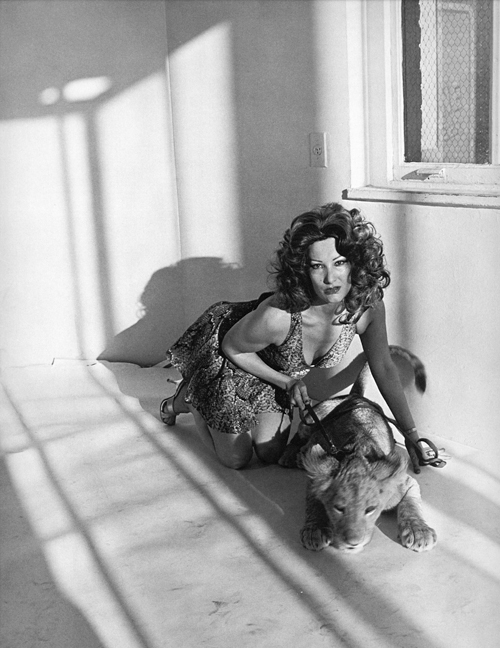 “I came in on a Sunday to do this picture. I didn’t usually travel into the studio on the weekends.
“I came in on a Sunday to do this picture. I didn’t usually travel into the studio on the weekends.
The stripper was part of that earlier burlesque tradition and t
he lion cub was part of her act. It was so poignant. I just about cried. I was never so moved.I had to go and pick them up at the Melody Burlesque in my VW bus at the time – I had somebody driving it – but she still had to walk a little bit, a block or so. People would stop what they were doing, in the middle of the street, and would come over and say, “That’s a lion.”
He was about six months old, not that big yet. We got him into the bus. I tried to be casual, not to make anybody nervous. It was one of those beautiful, bright sunny days, but there were clouds gathering. I was a nervous wreck thinking about how I was going to get the dancer and the lion cub over to the studio, up in the elevator, into the light at the right time of day, before the sun was going to cloud over.
Can you imagine being with a lion cub in the traffic? He was behind us on the elevated part at the back of the bus. He was nervous. He didn’t like being moved in traffic. He didn’t like being in the bus that much either, and he kind of pounced on me from the back – but only lightly. It was a rather exquisite feeling.
When we got to the studio I said, “You’ll be fine. Relax.” I didn’t know what to do. This was a linoleum floor which I usually didn’t include in pictures.
I just fell in love with him. He was a beauty, and I felt sorry for him too. I thought the model was so poignant too, the whole thing was so beautiful. I just hoped to hell I would get the picture.
The model loved him. He’d eaten the mattress at this sleazy hotel where she and her husband were staying. But she wasn’t mad at him or anything. She just loved him”.
*
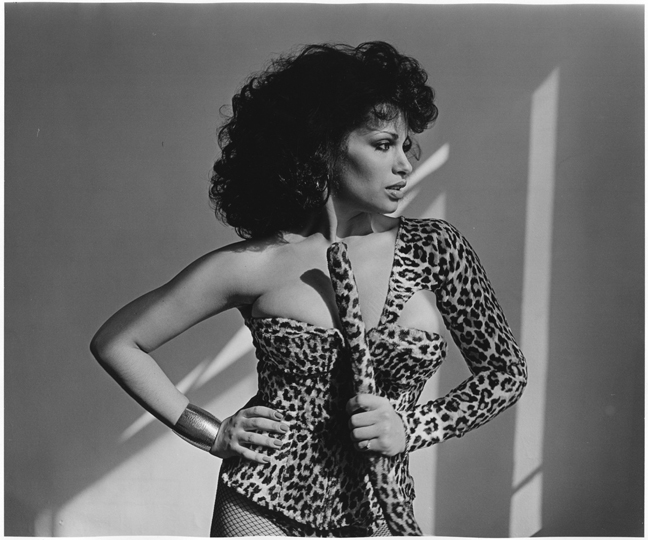 “Vanessa Del Rio was really wild. First of all, she had to go to the ladies room, and the ladies room was down the hall, so I had to carry her tail, which was very long. It was a beautiful costume, very well-made, and I had to carry it there and back.
“Vanessa Del Rio was really wild. First of all, she had to go to the ladies room, and the ladies room was down the hall, so I had to carry her tail, which was very long. It was a beautiful costume, very well-made, and I had to carry it there and back.
When she posed she wanted to put the edge of the tail in her mouth and be more provocative. I just kept telling her ‘no’”.
*
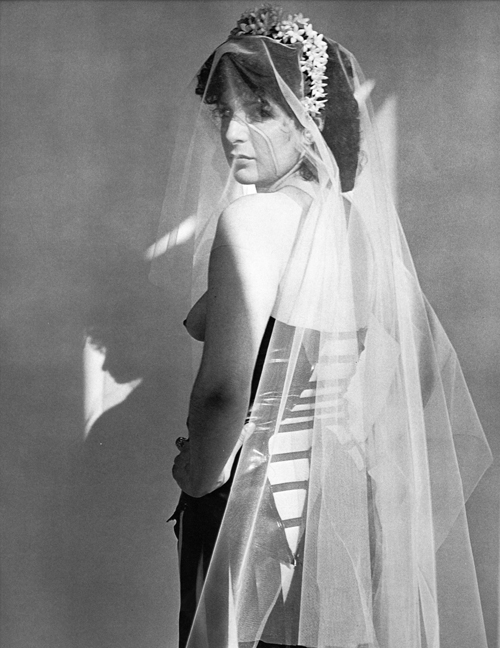 “This was a bondage performer. She had this outfit as a prop from the bondage show, and this is one of the few times I added to it. I went out to get the white veil – the shop was right around the corner on 38th Street, a street which had all these bridal novelty stores. So I got a bondage bride. It was part of my costuming.
“This was a bondage performer. She had this outfit as a prop from the bondage show, and this is one of the few times I added to it. I went out to get the white veil – the shop was right around the corner on 38th Street, a street which had all these bridal novelty stores. So I got a bondage bride. It was part of my costuming.
This picture was in front of Show World for two years. It’s the picture that Edmund White saw from his taxi that started all the publicity”.
*
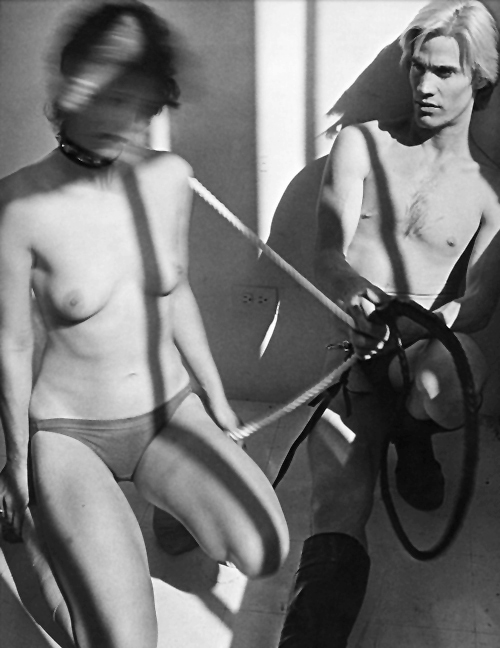 “They were actually married and they had a bondage act. He looks really kind of like a Nazi, but he was very nice. I like how his boot is circled by the whip. And also how the shapes worked out.
“They were actually married and they had a bondage act. He looks really kind of like a Nazi, but he was very nice. I like how his boot is circled by the whip. And also how the shapes worked out.
It’s a complex picture. It’s all so compressed into this little space, trying to get them both in the light”.
*
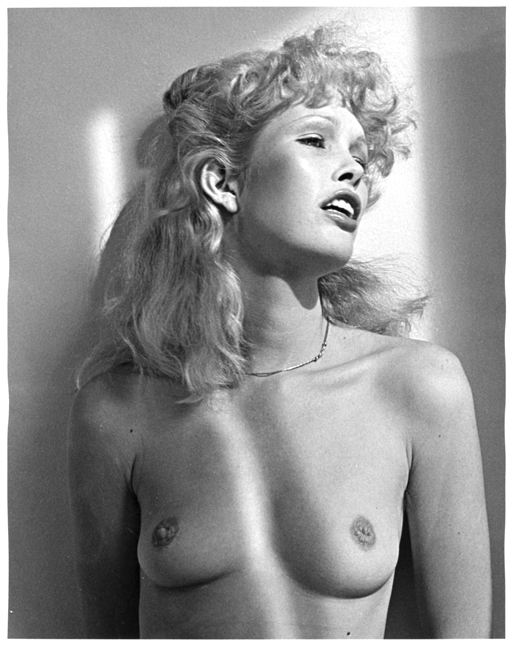 “Serena was working in New York at the time, and she was going to Paris right after that and she had her daughter with her. I’d photographed her several times, and she was really one of the reasons why I got a lot of models because she was such a big star, and she really believed in me. She’s so photogenic.
“Serena was working in New York at the time, and she was going to Paris right after that and she had her daughter with her. I’d photographed her several times, and she was really one of the reasons why I got a lot of models because she was such a big star, and she really believed in me. She’s so photogenic.
The first couple of times I photographed her I just thought they were too much like fashion photos. Kind of sexy, but I couldn’t get her to relax. She was always posing, and I couldn’t get past the surface.
She always talked about her daughter and showed me pictures of her daughter. One day she said, “I want you to photograph me with my daughter.” I really didn’t want to do that because I didn’t want to photograph any minors. I already felt that I was in over my head, believe me. But she was very insistent, a very strong-willed person. Sure enough, she appeared with her daughter one day, and so we took some photographs of them together. (Note: The photograph above is from an earlier session The picture featuring Serena with her daughter can be found in the book).
The one I used in the book turned out to be a famous picture. It was in a book by Aperture, in the exhibition Mothers and Daughters, which was sponsored by Stouffers Lean Cuisine. But it was controversial and they tried to boot it out.
Shortly after this, Serena was on her way to France with a nanny who was a guy. The legal father of the daughter was a black intellectual, a professor from Yale, at Berkeley, I think. He adopted the child, but he wasn’t the biological father.
He didn’t like the fact that she was leaving his daughter with the nanny in Paris, and so he stole the daughter. He just abducted the kid. He took the child to some kind of huge area in California where I think they grew marijuana, like a commune or something.
Serena had to hire a helicopter to try and get the child back.
After her daughter disappeared, she carried the picture I took around with her in her wallet”.
*
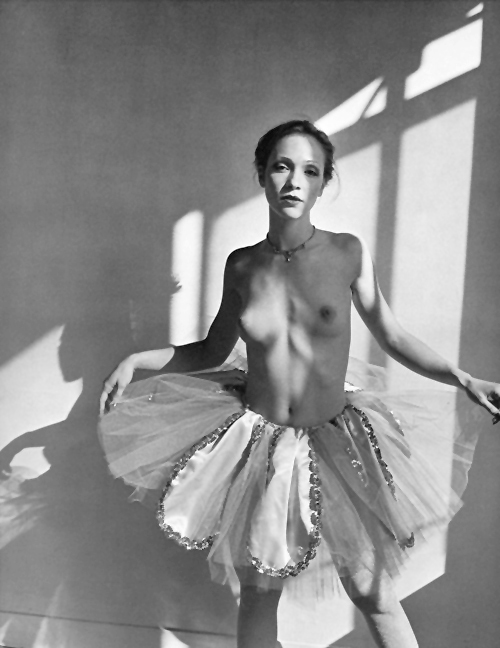 “Her name was Alexandra. This was a really early photograph that I took. She was very pretty. Sad-looking too.
“Her name was Alexandra. This was a really early photograph that I took. She was very pretty. Sad-looking too.
She was in a lot of porno movies, some rough ones too. I never saw the movies, but from what I heard, it sounded abusive to me, pretty heavy-duty. I must say, that in their little acts, coming on stage, dancing around and stripping, nobody was touching them, nobody was abusing them. This was just dancing around on-stage.
Their acts lasted about 20 minutes, then they’d have a couple of hours off. It’s was a hard thing to do, but they would get into their little fantasies on stage.
Alexandra was into this little fantasy of being a ballerina, and I related to the fantasy and the beauty of the tutu. It’s a very French picture. This is like one of the Impressionist pictures of ballerinas”.
*
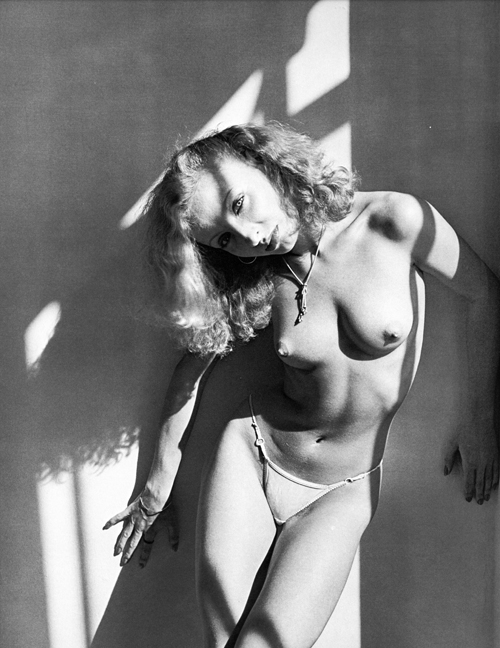 “She was beautiful. She was French, and her father was a fancy architect. She was a bit of a drug addict, I’m afraid. I hope she’s all right. I liked her a lot. She was living at The Chelsea Hotel at the time”.
“She was beautiful. She was French, and her father was a fancy architect. She was a bit of a drug addict, I’m afraid. I hope she’s all right. I liked her a lot. She was living at The Chelsea Hotel at the time”.
*
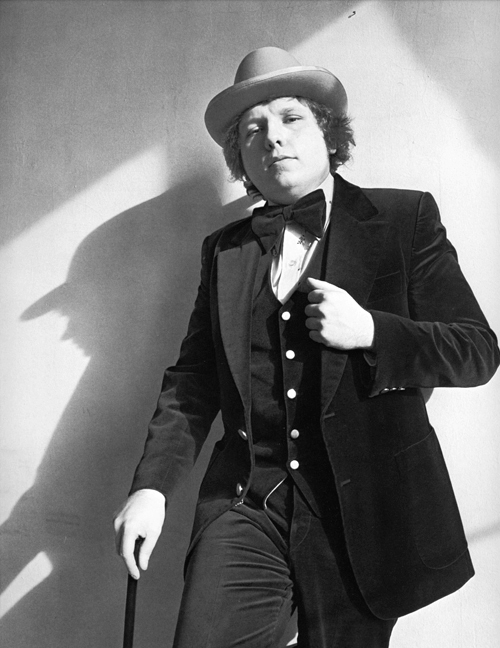 Timothy Beckley (Hustler movie critic 1974-76, editor of Adult Cinema Review)
Timothy Beckley (Hustler movie critic 1974-76, editor of Adult Cinema Review)
“This guy dressed like an old-fashioned carnival barker. He was really into his look.
He was a promoter; I don’t know who or what he was promoting, but he had a little cart. His suit was all blue, royal blue. Velvet. His little cart that was blue too with gold letters”.
*
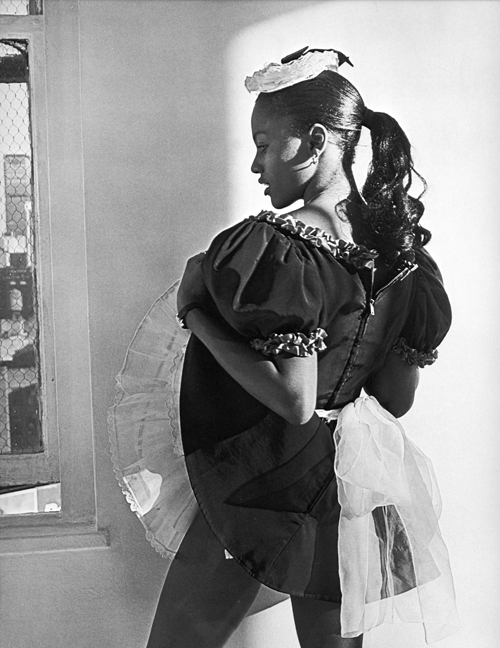 “She didn’t know what to do. She planned on holding her skirt up. She had no underwear on, but I didn’t want that. First of all, I don’t want an X-rated picture. It’s already on the edge. So I said, “Don’t face me, face the city.”
“She didn’t know what to do. She planned on holding her skirt up. She had no underwear on, but I didn’t want that. First of all, I don’t want an X-rated picture. It’s already on the edge. So I said, “Don’t face me, face the city.”
I like the little hat and the ponytail and the stockings, and this thing, like a tail, that she has too. And she’s a little unzipped – I always left things. I didn’t try to make them change in any way”.
*
“This girl was a booth girl – and I didn’t photograph booth girls. My models were from the stage, but I made an exception with her.
She was in a booth, one of these one-on-one booths where people put money in to see the girls. The viewer would sit there and the girl came in from her side, and you were separated by a floor-to-ceiling, wall-to-wall sheet of Plexiglas, clear Plexiglas. Each had a wall phone, and I guess you could tell her what you wanted or whatever. But you couldn’t touch her.
She was in one of those booths. She was very short. She was so exquisite, though. I just wanted to photograph her. I said, “When can you come?” She said, “I can’t really because I start at 10:00am.” Those booths were so popular. They always had customers. I asked if she could come later but she said, “I can’t come in the afternoon either. I never get a break. We eat our sandwiches in the booth.”
I felt pretty bad, but then she said, “The only time I can do it is before I start work, in the morning,” so one time I took an early train, and we photographed early. You can see that I wasn’t getting the usual light. There is a different light. I had to squeeze light coming from the East. I couldn’t use light coming from the West. This is the East window”.
*
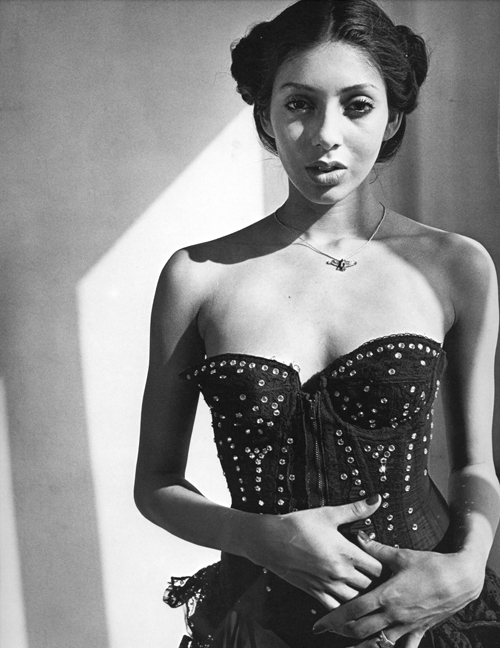 “She was Armenian. I loved her braided corset and her hands are so beautiful.
“She was Armenian. I loved her braided corset and her hands are so beautiful.
She just was so beautiful but wasn’t around long”.
*
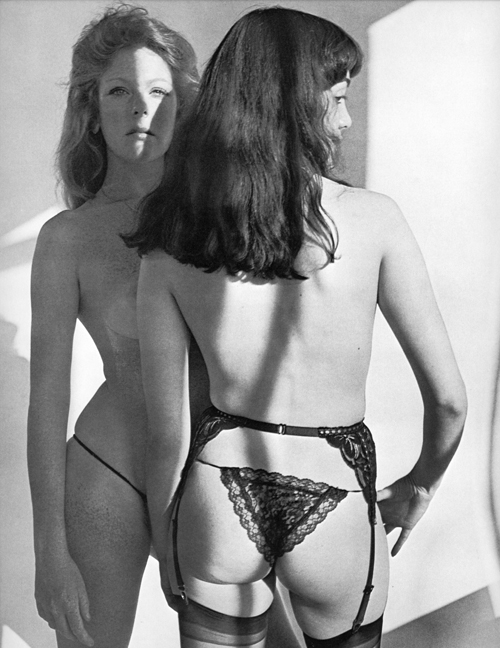 “Some of these people came from very strict backgrounds and were just doing this very clandestinely. That was the case with these two, who did a lesbian show.
“Some of these people came from very strict backgrounds and were just doing this very clandestinely. That was the case with these two, who did a lesbian show.
The girl facing the camera had incredible red hair and freckles. She disappeared really quickly, too. I hope nobody abducted her”.
*
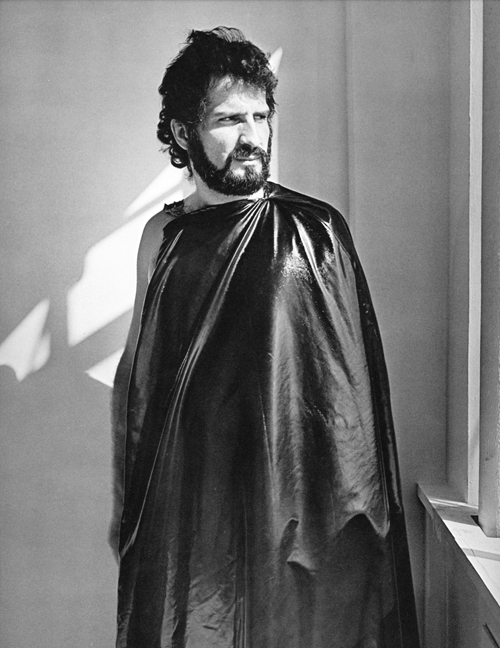 “The subject is Ron Martin. He was the producer of live sex shows at Show World.
“The subject is Ron Martin. He was the producer of live sex shows at Show World.
The rubber cape was a prop. I thought that he was acting out his fantasy of being a capitalist and an empire-builder, so he got to have this little empire”.
*
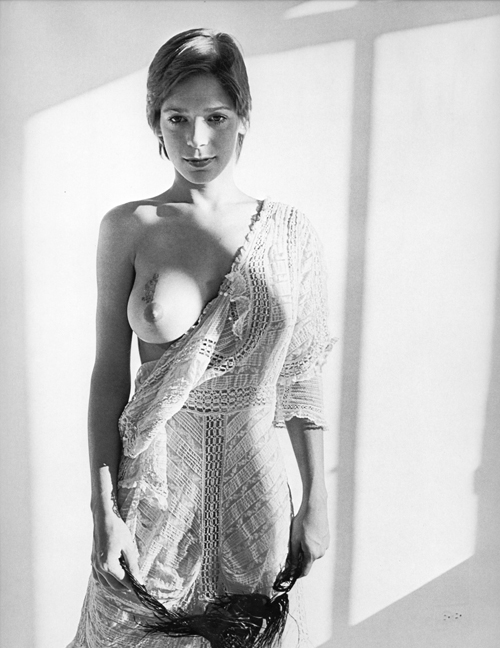 “Her mother had been a famous stripper from the South. She had a tattoo on her breast of a little devil. She was beautiful. She was a very edgy girl. She always seemed to be wearing t-shirts with no bra or anything. She was a very daring person.
“Her mother had been a famous stripper from the South. She had a tattoo on her breast of a little devil. She was beautiful. She was a very edgy girl. She always seemed to be wearing t-shirts with no bra or anything. She was a very daring person.
I liked her lace dress”.
*
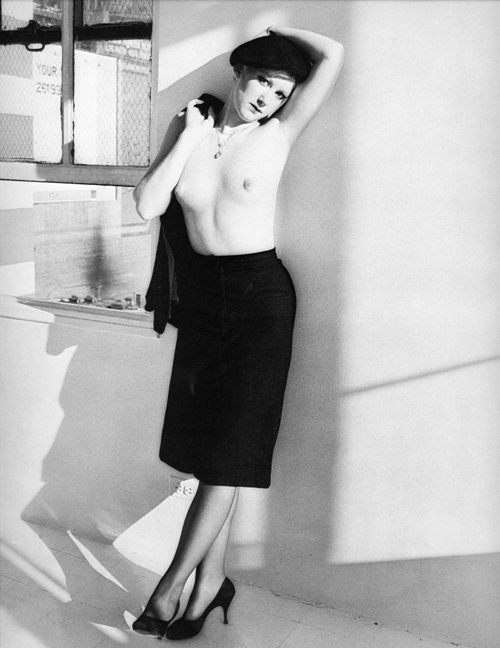 “She came off the bus, Port Authority, and turned up at Show World. They asked her, “OK, you want to work? You want a job? You can have a job”. She was hired that day, and this photograph was taken the same day. This is her traveling outfit. She came from Minnesota. The sun was gorgeous that day.
“She came off the bus, Port Authority, and turned up at Show World. They asked her, “OK, you want to work? You want a job? You can have a job”. She was hired that day, and this photograph was taken the same day. This is her traveling outfit. She came from Minnesota. The sun was gorgeous that day.
This was the most popular photograph whenever I exhibited in Germany”.
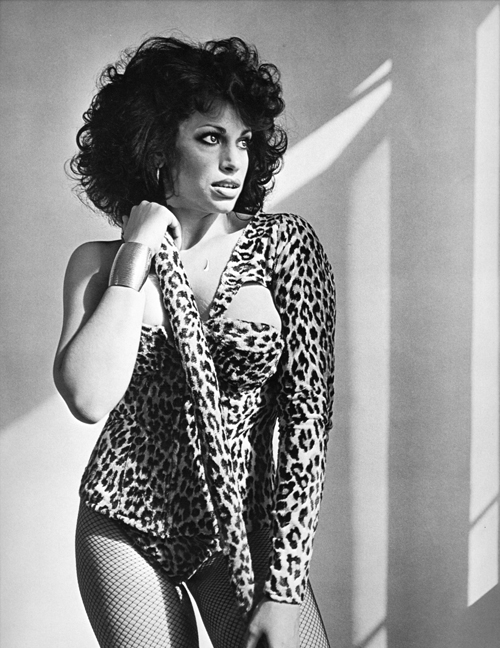
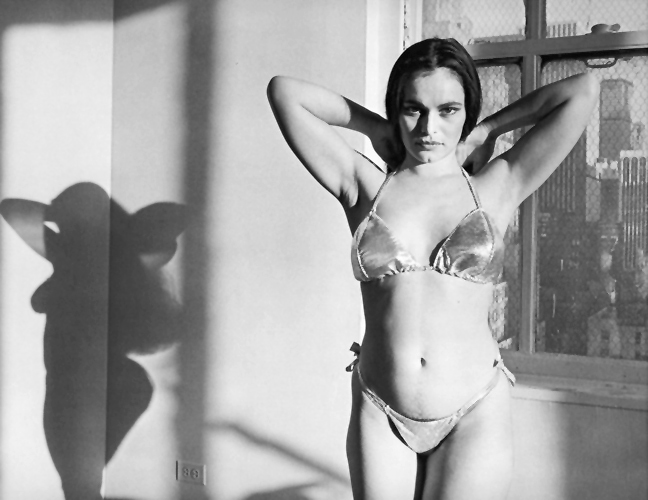
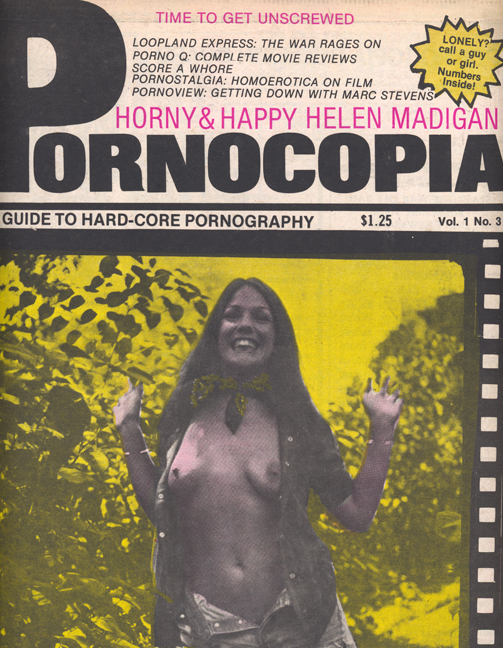
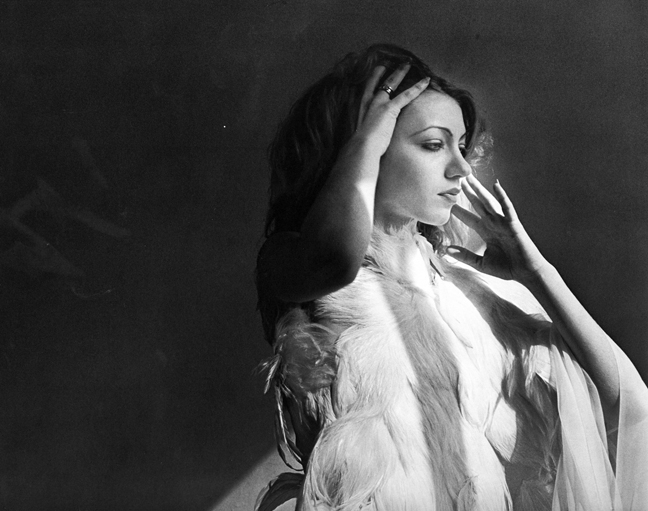
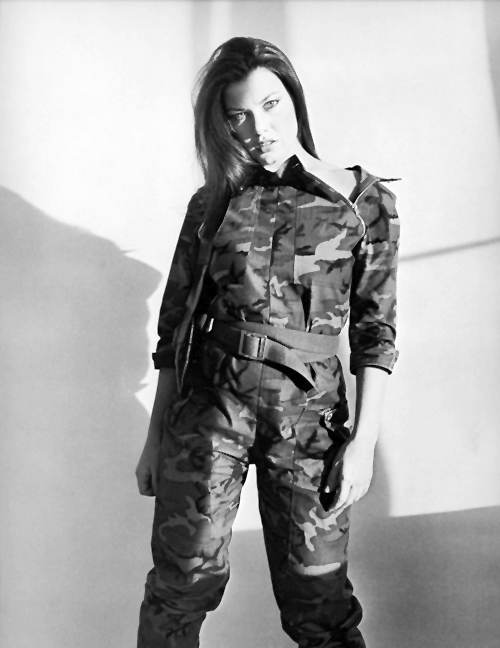
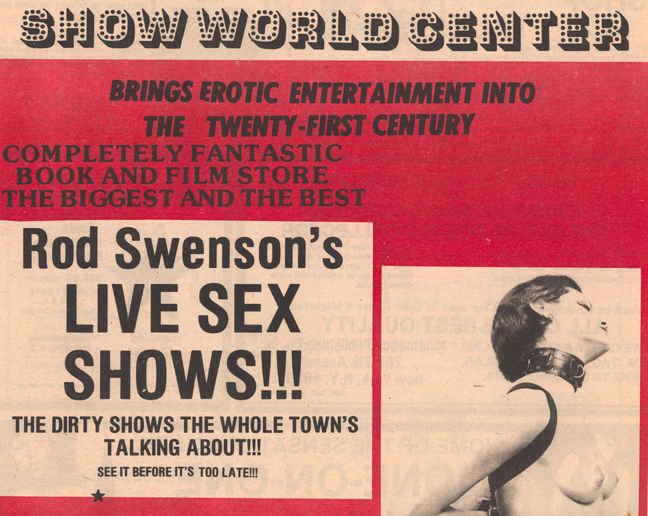
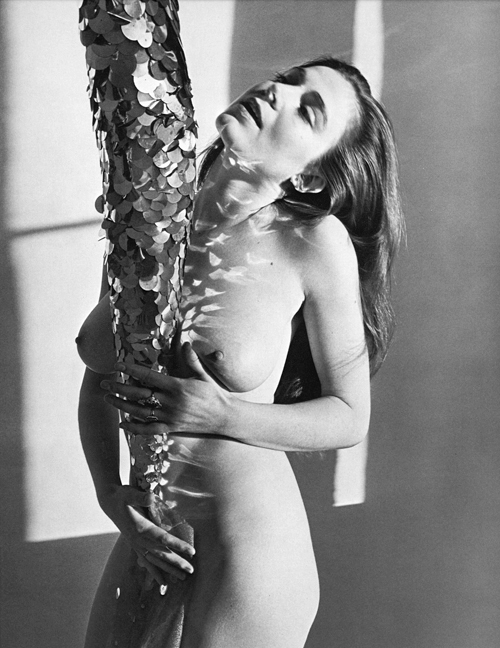
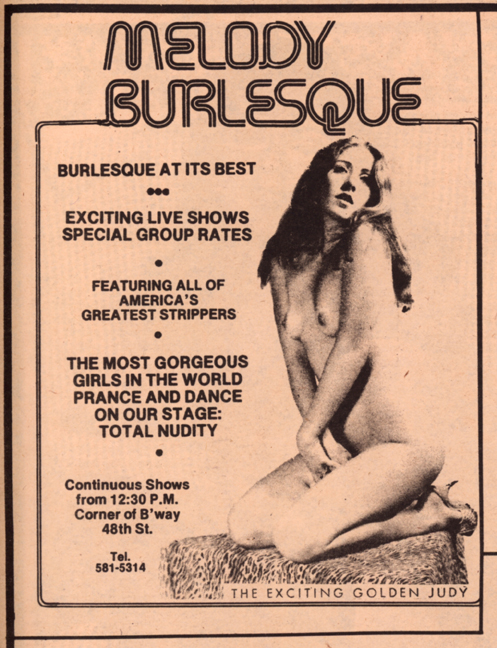
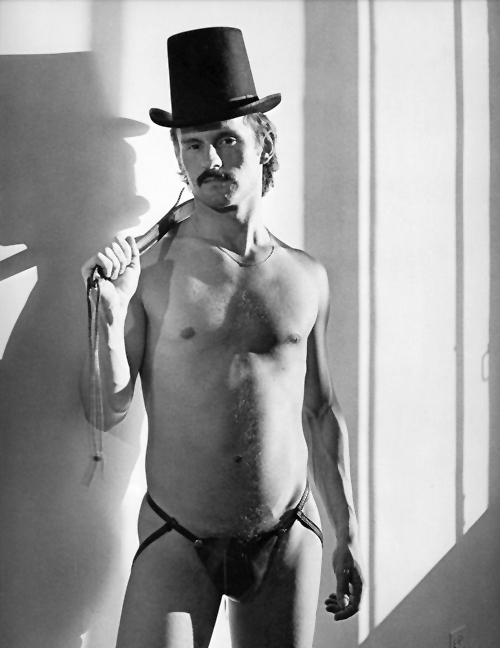
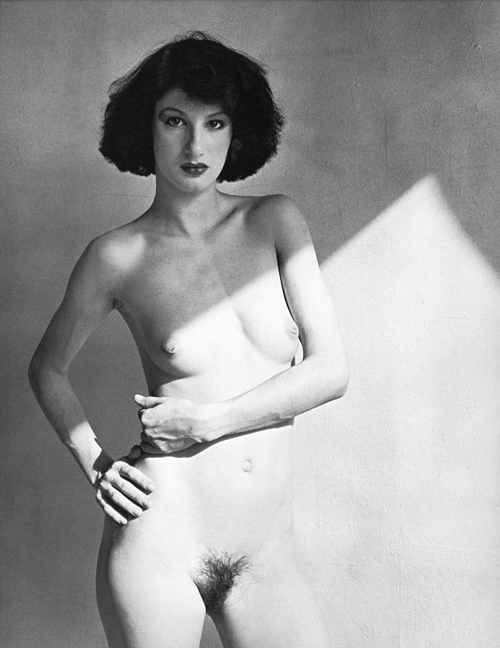
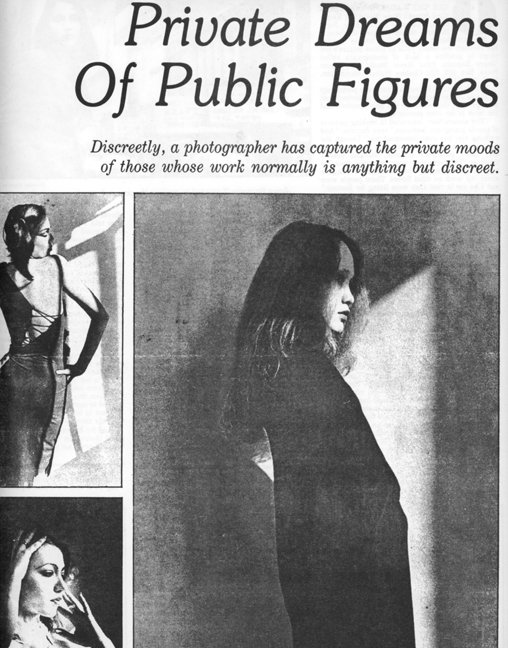
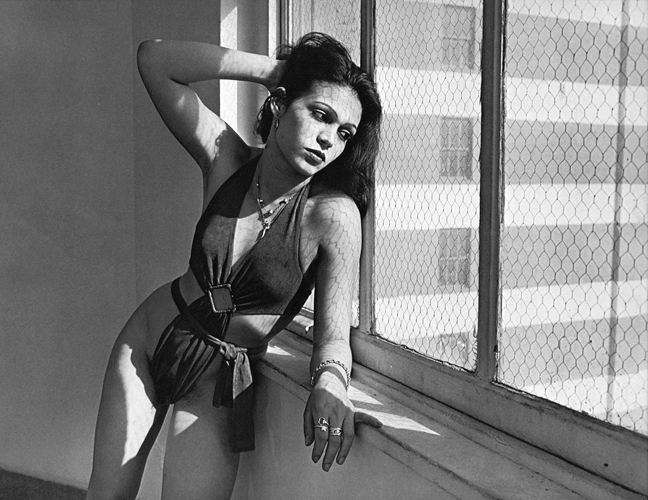
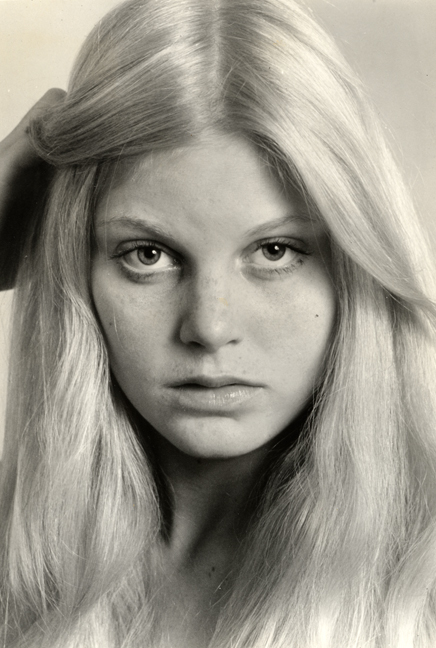


Definitely something European about her pose, reminds of the pics Brassai used the take of the Parisian underworld in the 1930s. All pics were beautiful and took me back many many years ago.
These photographs are amazing, dignified records of the performers of the time.
Ms. Baronio is to be applauded, revered for this body of work.
Will the book be reissued?
Another amazing piece by TRR – the number one authority for golden age documentary archives. Cheers guys!
As I remember, (unless my memory is playing tricks on me again) all her photos were done with available (natural) light coming through the window in the little office she was shooting in. Giving each one a totally unique look.
Of course she explains that in her commentary but my slow computer didn’t fill in all the words until after I made my comment.
Yes Carter – thats’s absolutely right.
In fact Joyce talks about the use of natural lighting in the above interview – and about how she was restricted to bright sunny days as a result!
Thanks!
“I’m walkin here!” As Times Square became the ‘home’ of so many sexual explorations from soft to hard and back again, the community of artists , models, slaves and queens, kept, procureres, producers, performers and filth purveyers, sex left the dark streets and alleys and headed into more obsure locations right in front of your eyes on a brightly lit day in a window in the morning. And, everybody started walkin’ here.
Thank you Joyce for helping Ash keep it all deep focus.
Roy Karch
roykarch.com
I remember. I liked these pics because they are artistic
not sexual. Some people got off on making sex something dirty instead of something beautiful as it’s meant to be.
Wonderful, wonderful photographs. Love the breezy melancholy feel which emanates from each image.
I echo the sentiment made above – the book should be re-issued! Great pictures, a really interesting read. Thanks for this, Ash.
Amazing shots, they really bring back memories. I met her back when she was doing this and I worked at Show World so I know everybody in the pics if no by name then by face
Thought the pics would be depressing, but I found them very moving.
Beautiful work.
Sorry to reply to a post after some 2 years.
The Candida picture is quite something…quite stunning.
And, unless someone disagrees, has almost a timeless aspect.
One of the best photos ever taken. I did like the color blue but I don’t think I had a blue cart. I did have a blue briefcase. I always get a chuckle when I think of this photo. Whenever someone wanted to review the book and wanted to use a photo but couldn’t use nudity they would select my picture since I was one of a handful of guys in Joyce’s magnificent book and certainly dressed to the Tees. The photo made it into American Photography (makes me a real model, right?) and I think the Village Voice or was it the San Francisco Ball? I know it was shown on TV once and my dad was in the room and he didn’t realize it was a news report on porno.
Best to everyone.
If your interested in UFOs, paranormal and spooky shit subscribe to my YouTube channel https://www.youtube.com/user/MRUFO1100
girl on right on “Private dreams of public figures” looks like redhead Lori Blue, from Little Girls Blue 1!?
just my 2cents.
grtz
zushiomaru